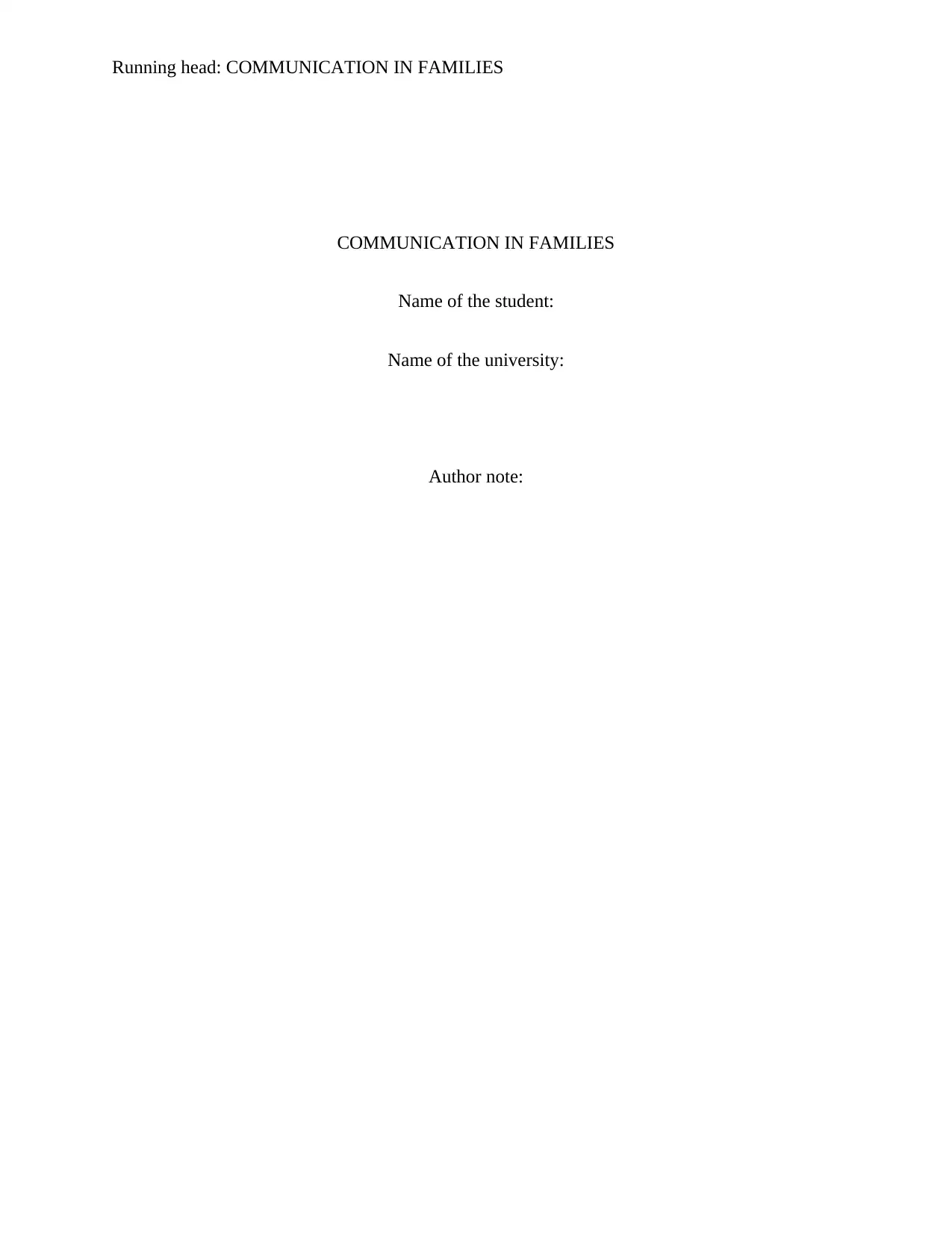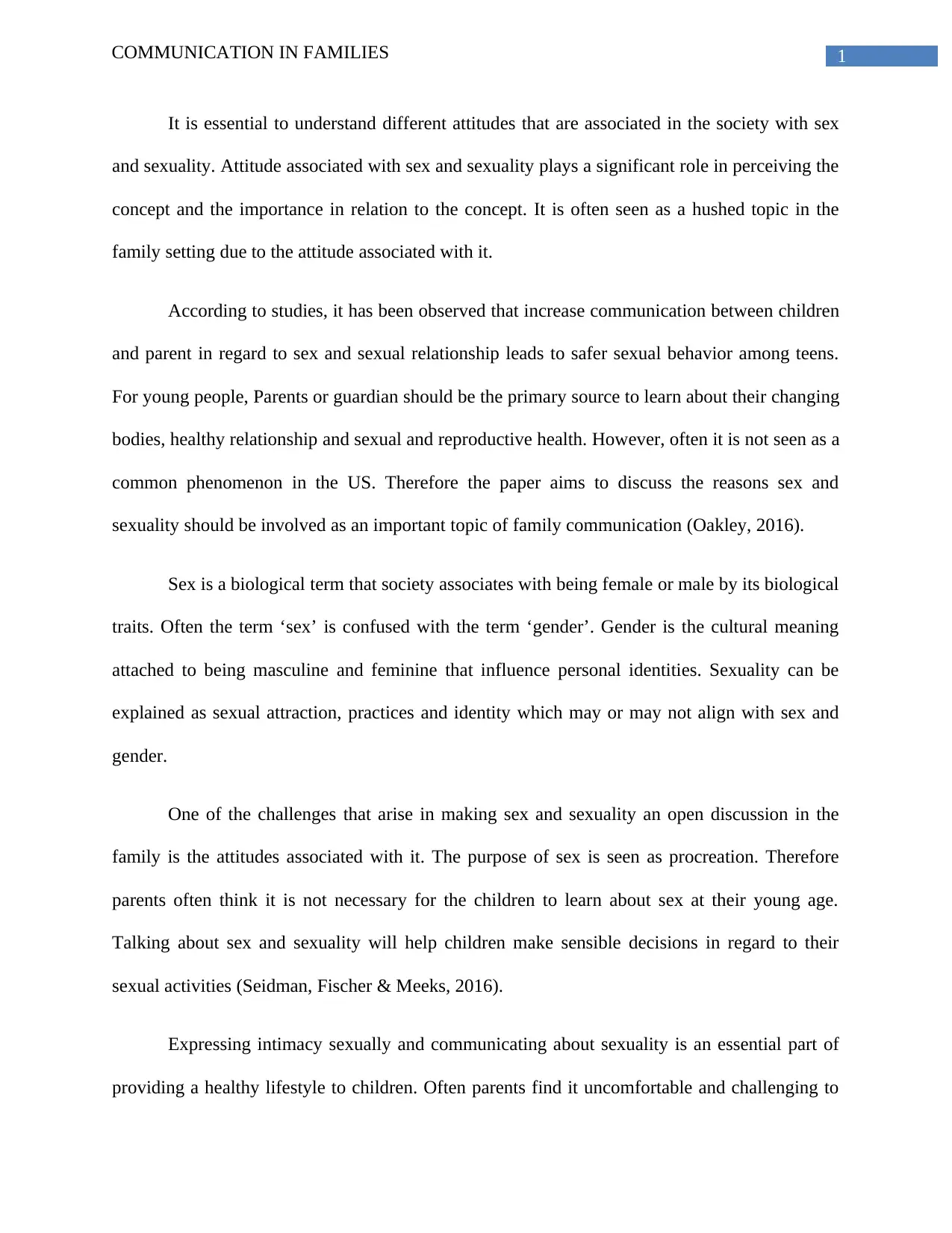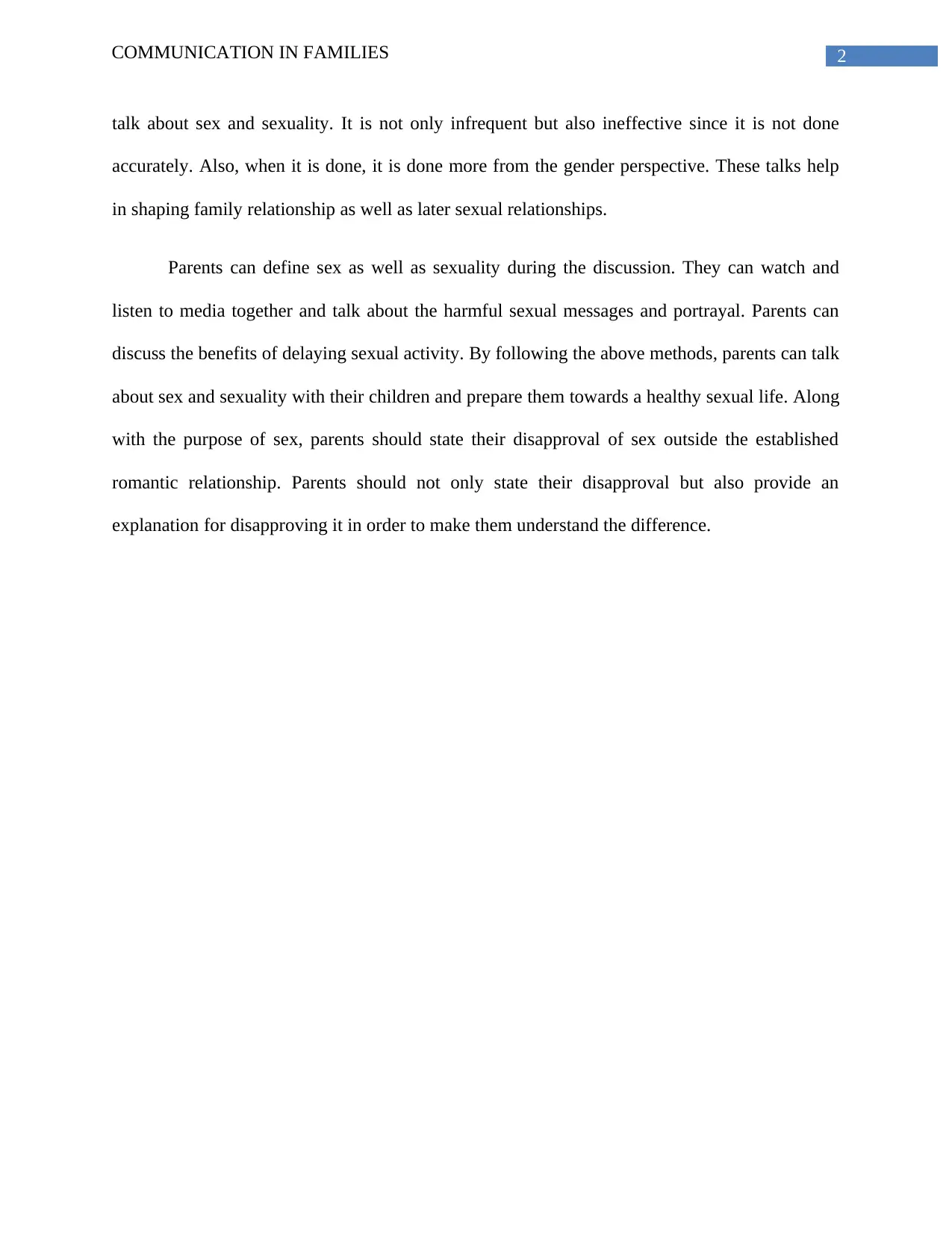Family Communication: Sex and Sexuality Discussions in US Families
VerifiedAdded on 2023/01/19
|4
|587
|85
Report
AI Summary
This report addresses the critical need for open and effective communication about sex and sexuality within families, as highlighted by a 300-level course in family communication. It proposes a class for the U.S. government's "Strong Families" program, focusing on the rationale behind incorporating sex and sexuality into family discussions. The report emphasizes that communication about sex and sexuality, although often avoided, is crucial for teenagers' safer sexual behavior. It stresses the importance of parents as primary sources of information and discusses the challenges and attitudes associated with these conversations. The report outlines specific strategies for parents, including defining terms, discussing media portrayals, and addressing the purpose of sex within relationships. It also cites relevant research to support the need for this class and offers a detailed outline of the course content, including talking points, activities, and resources, to equip families with the tools to have healthy and informed conversations about sex and sexuality, promoting healthy family relationships and sexual behavior.
1 out of 4











![[object Object]](/_next/static/media/star-bottom.7253800d.svg)